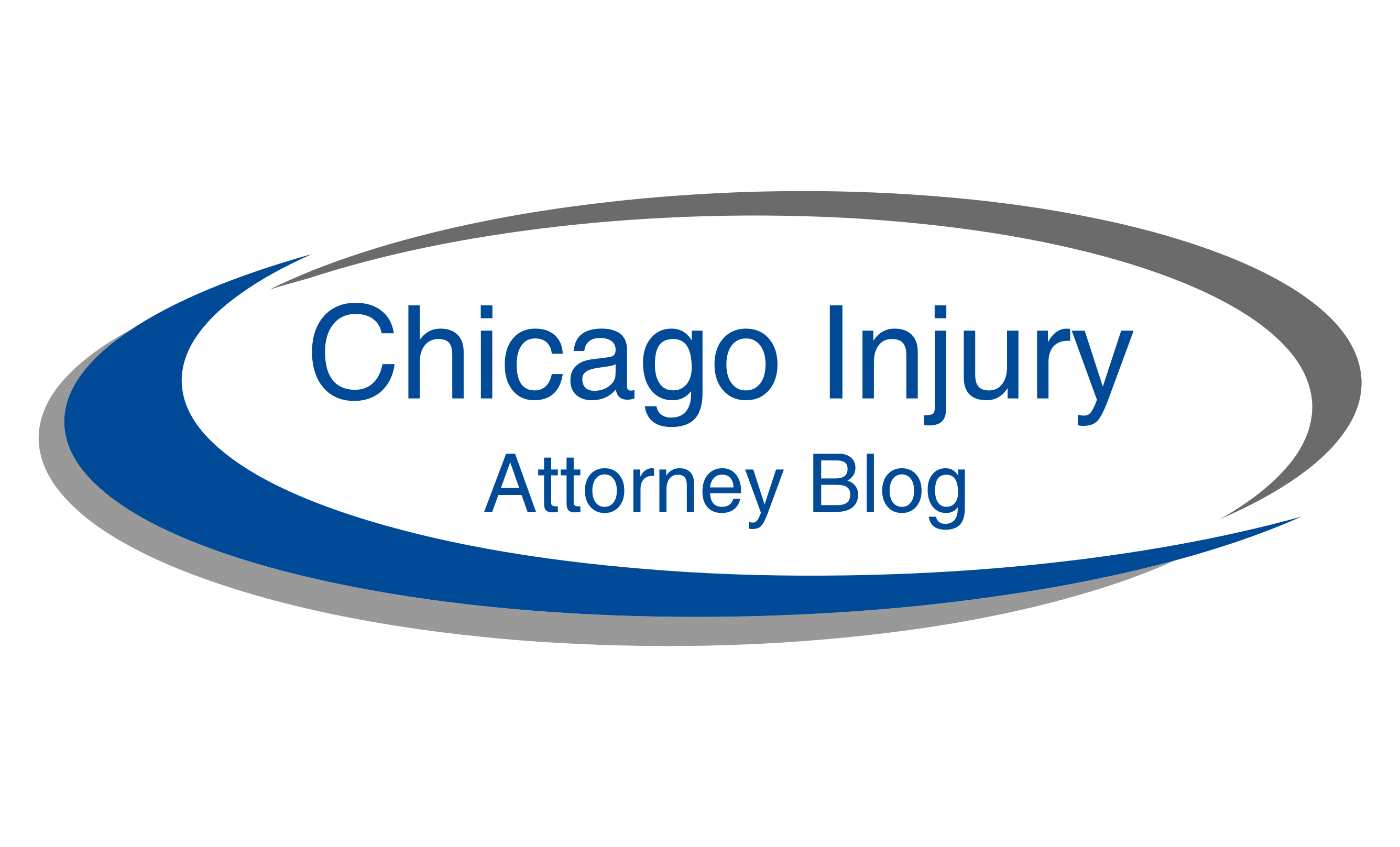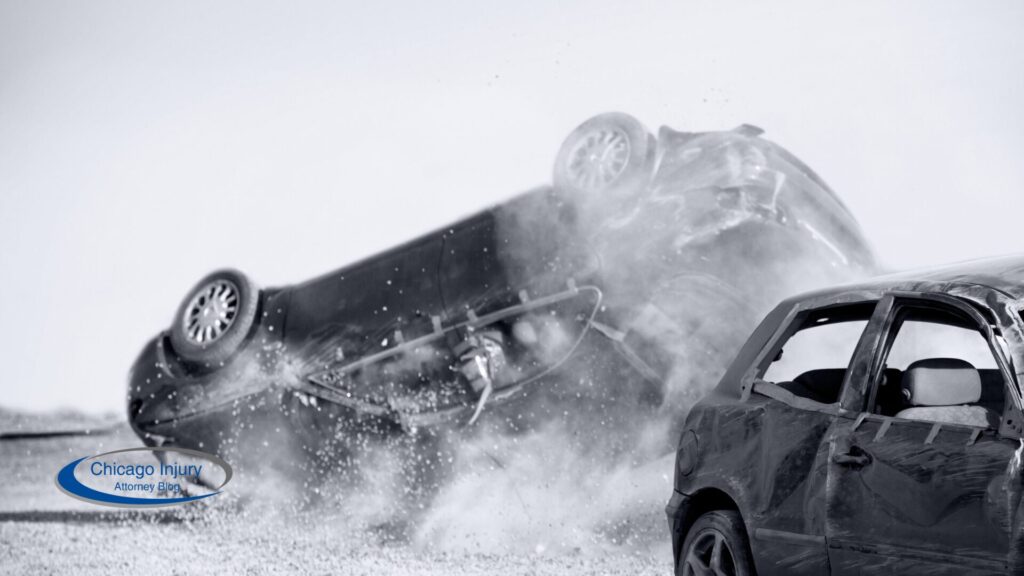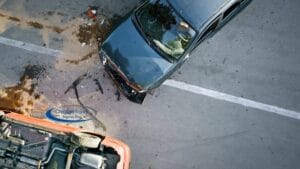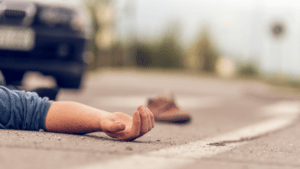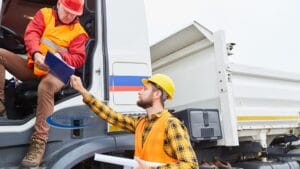Rollover accidents represent one of the most perilous and frightening types of collisions encountered on the road.
A comprehensive understanding of the physics underlying these incidents can provide valuable insights into their mechanisms and the effects they have on the human body. Given the dynamics of vehicle stability and the common injuries associated with such accidents, it is essential for individuals driving in Chicago and its surrounding areas to recognize these risks.
This article will examine the factors influencing injury severity, outline the appropriate steps to take following an accident, and discuss avenues for seeking compensation for any resulting suffering.
Whether one is a seasoned driver or relatively new to the roads, possessing this knowledge can significantly enhance safety and awareness.
The Physics of a Rollover Accident
Understanding the dynamics of a rollover accident is essential for both accident victims and legal professionals handling personal injury claims in Chicago, Rockford, and Champaign.
Rollover accidents transpire when a vehicle overturns onto its side or roof, frequently influenced by factors such as vehicle design, adherence to safety standards, and environmental conditions, including adverse weather.
These incidents can result in significant injuries for victims, including traumatic brain injuries, spinal cord injuries, and emotional distress stemming from the traumatic event.
How Does a Rollover Accident Occur?
Rollover accidents frequently arise from a combination of factors, including the actions of negligent parties, excessive speeds, and non-compliance with established vehicle safety standards.
Sharp turns executed at high speeds and sudden stops significantly elevate the likelihood of these catastrophic incidents. When drivers underestimate the forces acting upon their vehicles during such maneuvers, the potential for loss of control increases markedly.
Additionally, collisions with other vehicles—particularly at intersections—can initiate a perilous chain reaction, resulting in rollovers. The repercussions of these events are often severe, affecting not only the drivers involved but also innocent passengers and bystanders.
To mitigate some of these risks and enhance overall road safety, it is essential to ensure proper vehicle maintenance and to practice mindful driving behaviors.
What Happens to the Body During a Rollover Accident?
During a rollover accident, the human body is subjected to extreme forces that can result in traumatic injuries, including fractures and head injuries, while also increasing the risk of ejection.
The violent dynamics of such incidents can cause the body to impact hard surfaces, leading to significant trauma. This may encompass spinal injuries, which can severely impair mobility, as well as soft tissue injuries that can result in prolonged pain and require extensive rehabilitation.
Plus the physical challenges, the psychological impact of surviving such a traumatic event can be profound. Victims often experience feelings of anxiety, depression, or post-traumatic stress disorder (PTSD), which can complicate their recovery.
Understanding these multifaceted effects is essential for facilitating holistic healing and providing adequate support.
What Are the Common Injuries in a Rollover Accident?
Common injuries sustained in rollover accidents encompass traumatic brain injuries, spinal cord injuries, and various fractures, all of which typically necessitate extensive medical treatment.
These injuries can result in significant physical impairments, impacting not only mobility but also the ability to perform activities of daily living. For example, traumatic brain injuries may lead to cognitive deficits and emotional challenges, underscoring the importance of rehabilitation for effective recovery. Likewise, spinal cord injuries often require long-term care, including physical therapy and possibly surgical interventions.
Victims may also experience emotional distress arising from their trauma, which can complicate the healing process. Therefore, addressing both physical injuries and mental health is essential for individuals as they navigate the challenging journey toward recovery, often relying on support from medical professionals, therapists, and family members.
Factors That Can Impact Injuries in a Rollover Accident
Numerous factors can profoundly influence the severity of injuries sustained in a rollover accident. These factors include the type and design of the vehicle, the use of seatbelts, and the overall safety measures implemented.
Vehicle Type and Design
The type and design of a vehicle, particularly Sport Utility Vehicles (SUVs), are critical factors influencing the likelihood of rollover accidents, primarily due to their elevated center of gravity.
This increased risk is further exacerbated by various elements such as vehicle weight distribution and tire specifications, which can significantly affect stability during sharp turns or evasive maneuvers. Safety regulations delineate specific design features intended to reduce rollover susceptibility, including advanced electronic stability control systems and reinforced roof structures.
Comprehending these dynamics is vital, as rollover incidents typically result in more severe injuries compared to other types of collisions, affecting both vehicle occupants and other road users. By analyzing the engineering decisions made by manufacturers, one can gain valuable insights into how these factors may effectively mitigate injury severity in such hazardous situations.
Seatbelt Usage
Proper seatbelt usage can substantially decrease the risk of ejection and lessen the severity of injuries in a rollover accident, rendering it an essential safety measure.
Research indicates that remaining secured by a seatbelt during high-impact scenarios significantly enhances an individual’s chances of survival. During a vehicle rollover, the forces involved can be immense, often resulting in catastrophic outcomes for individuals who are not properly restrained.
By adhering to this straightforward yet effective safety practice, individuals not only safeguard their own well-being but also serve as an important example for others. Integrating seatbelt use into a comprehensive safety strategy, which includes avoiding distractions and ensuring proper vehicle maintenance, is crucial for minimizing the potential for injury and improving overall road safety.
Speed and Impact of the Accident
The speed at which a rollover accident occurs significantly influences the severity of the crash and the subsequent injuries sustained by victims.
Research indicates that higher speeds markedly increase the likelihood of severe injuries or fatalities in such incidents. According to the National Highway Traffic Safety Administration, approximately 70% of fatal rollover crashes transpire when the vehicle is traveling at speeds exceeding 40 miles per hour. This alarming statistic highlights that velocity not only affects the dynamics of the rollover but also amplifies the force exerted on the vehicle’s occupants.
As speed increases, the probability of a vehicle flipping also rises, and the resulting impact forces can lead to catastrophic outcomes, including traumatic brain injuries and spinal cord damage.
Therefore, understanding the relationship between speed and rollover outcomes is essential for enhancing safety measures and promoting public awareness.
Presence of Airbags
The inclusion of airbags in vehicles provides an additional layer of protection during rollover accidents, potentially reducing the severity of injuries sustained.
In such critical situations, these safety features deploy with remarkable speed, cushioning impacts and minimizing the risk of head and neck injuries. Advanced designs, such as side-curtain airbags, specifically address the unique challenges associated with rollover incidents by offering coverage along the windows, thereby helping with the prevention of occupant ejection.
Safety regulations have progressively evolved to incorporate stricter standards for these protective devices, ensuring their effectiveness in supporting injury prevention measures. Consequently, vehicle manufacturers are committed to continuous innovation aimed at enhancing the efficacy of airbags, with the objective of creating a safer driving experience even in the most hazardous circumstances.
Steps to Take After a Rollover Accident
Following a rollover accident, it is imperative to undertake specific actions to ensure personal safety and safeguard legal rights. These actions include:
- seeking medical attention
- consulting with an attorney
- thoroughly documenting the details of the accident
Seek Medical Attention
Seeking prompt medical attention following a rollover accident is essential for addressing any immediate injuries and initiating the recovery process.
Even if an individual feels relatively well, there may be concealed injuries that could become apparent later, such as concussions, internal bleeding, or damage to soft tissues. An early evaluation allows healthcare professionals to perform necessary assessments, ensuring that injuries are identified and treated in a timely manner. This proactive approach not only facilitates effective recovery timelines but also prevents complications that may arise from untreated conditions.
By prioritizing a visit to a medical facility, individuals can establish a robust foundation for their recovery journey, mitigating potential long-term health issues while also informing rehabilitation strategies.
Contact an Attorney
Contacting an attorney following a rollover accident is essential for effectively navigating the complexities of legal proceedings and ensuring fair compensation for injuries sustained.
Legal professionals offer invaluable expertise, particularly in negotiating with insurance companies, a process that can often prove daunting for individuals. They advocate for their clients’ legal rights, ensuring that every aspect of the compensation claims process is meticulously addressed.
With a comprehensive understanding of personal injury law, an attorney is equipped to gather evidence, construct a persuasive case, and counteract tactics employed by insurers aimed at minimizing payouts.
Their objective is to secure not only immediate medical expenses but also long-term restitution for pain and suffering, lost wages, and other damages arising from the accident.
Document the Accident and Injuries
Documenting the accident and any resulting injuries is a critical step in establishing a robust personal injury claim following a rollover accident.
Thoroughly collecting evidence, such as police reports and witness statements, is essential for substantiating the details of the incident. These documents play a significant role in illustrating the circumstances surrounding the accident, including the actions of all parties involved. Witness statements can provide impartial accounts, while police reports often contain crucial information regarding fault and initial assessments.
The accumulation of this documentation not only supports the claimant’s case but also increases the likelihood of a favorable outcome during negotiations with insurance companies or in a court setting.
Gather Evidence and Witnesses
Gathering evidence and testimonies from witnesses following a rollover accident can significantly bolster your case and enhance the likelihood of a favorable outcome.
This process is critical, as witness accounts provide corroborating details that can validate claims regarding the circumstances of the incident. It is equally important to focus on collecting comprehensive information, such as photographs of the scene, skid marks, and the positions of the vehicles involved.
Engaging with witnesses promptly is essential to ensure their recollections remain accurate, and their statements can prove invaluable during negotiations or court proceedings. Furthermore, expert evaluations conducted by accident reconstruction specialists add depth to the evidence and clarify the sequence of events leading to the accident.
Collectively, these efforts establish a robust foundation for personal injury claims and support effective recovery strategies.
Compensation for Injuries in a Rollover Accident
Individuals affected by rollover accidents may be eligible for compensation related to injuries, medical expenses, and emotional distress, all of which can profoundly affect their overall quality of life.
Medical Expenses
Medical expenses resulting from a rollover accident can escalate rapidly, making it crucial to understand the process of navigating insurance settlements for recovery.
Injuries sustained in such incidents may include fractured bones, traumatic brain injuries, or internal organ damage, each necessitating specific treatments that can place significant strain on both physical and financial well-being. The costs associated with physical therapy, surgical interventions, and long-term rehabilitation can considerably increase the initial hospital bills. Victims have the opportunity to seek compensation through insurance claims by meticulously documenting all medical records, treatment plans, and related expenses.
Additionally, engaging with legal professionals who specialize in these matters can ensure that all necessary costs—such as future medical treatments and lost wages—are comprehensively evaluated during negotiations with insurance providers.
Lost Wages
Lost wages resulting from an inability to work after a rollover accident can impose significant financial strain on victims and their families. This scenario often leads to an overwhelming sense of uncertainty, as bills accumulate and financial obligations become increasingly pressing.
For victims seeking financial recovery, it is essential to comprehend the process of effectively claiming compensation for their lost income. To do so, they must gather critical documentation, including:
- Pay stubs
- Tax returns
- Medical records that substantiate the impact of their injuries on their ability to work
Additionally, personal statements detailing the economic hardship experienced can strengthen their claims, providing a clearer representation of the income loss incurred through no fault of their own.
Pain and Suffering
Victims of rollover accidents may pursue compensation for pain and suffering, which encompasses both physical pain and emotional distress resulting from the incident.
This compensation is not solely contingent upon medical expenses or lost wages; it necessitates a comprehensive understanding of the emotional turmoil and physical limitations encountered following such traumatic events.
To effectively navigate this process, individuals must meticulously document their injuries and the subsequent effects on their daily lives. Detailed records, including medical evaluations, therapy sessions, and personal testimonies, are essential in substantiating claims.
This documentation not only underscores the severity of the sufferer’s circumstances but also aids legal professionals in accurately assessing the true extent of pain and suffering, ensuring that victims receive the compensation to which they are rightfully entitled.
Wrongful Death Damages
In unfortunate instances where a rollover accident results in wrongful death, surviving family members may seek compensation for their loss.
Navigating the intricate landscape of legal rights in such circumstances is essential, as these families frequently encounter significant emotional and financial challenges. They may pursue various forms of damages, including funeral expenses, lost wages, and compensation for pain and suffering, all of which can substantially influence their overall recovery.
It is imperative for the bereaved to recognize that they can not only claim immediate and tangible losses but also explore compensation for the emotional trauma experienced. Consulting with a knowledgeable attorney can greatly enhance their likelihood of obtaining the justice and financial relief they deserve during this challenging time.
Importance of Seeking Legal Help After a Rollover Accident
Seeking legal assistance following a rollover accident is essential for victims to comprehend their rights and effectively pursue personal injury claims.
By engaging the expertise of an attorney, individuals are better equipped to navigate the complexities of personal injury law with increased assurance. Legal professionals possess the skills necessary to evaluate the specific circumstances of each case, ensuring that victims receive appropriate compensation for medical expenses, lost wages, and emotional distress.
Furthermore, they offer critical guidance through the often daunting legal processes, negotiating with insurance companies on behalf of their clients to achieve optimal settlements. This support not only alleviates the pressures of managing a claim but also enables victims to concentrate on their recovery and the process of rebuilding their lives.
How an Attorney Can Help You Seek Compensation for Your Injuries
An experienced attorney can provide essential assistance in pursuing compensation for injuries, guiding clients through the legal action process and ensuring that their rights are adequately protected.
Their expertise encompasses more than merely filing paperwork; they diligently prepare a robust case by gathering evidence, interviewing witnesses, and consulting with medical professionals to accurately establish the extent of injuries sustained. In negotiations, an attorney advocates vigorously for fair compensation, utilizing their knowledge of legal precedents and the strategies employed by opposing parties.
Should the situation require, they possess the necessary skills to represent clients in court, effectively presenting cases before a judge and jury.
This comprehensive approach not only enhances the likelihood of obtaining just compensation but also alleviates the stress associated with navigating the intricate legal landscape.
Frequently Asked Questions
What happens to your body in a rollover accident?
During a rollover accident, your body is subjected to violent and sudden movements that can cause serious injuries. These injuries can range from minor cuts and bruises to more severe injuries like broken bones and spinal cord damage.
What are the most common injuries in a rollover accident?
The most common injuries in a rollover accident include head injuries, neck injuries, chest injuries, and fractures. These injuries are caused by the impact of the crash and the force of the rolling vehicle.
Can seatbelts prevent injuries in a rollover accident?
Seatbelts are crucial for preventing injuries in a rollover accident. They help to keep the occupant in place and reduce the risk of ejection from the vehicle. However, injuries can still occur even with the use of seatbelts.
What should I do if I am involved in a rollover accident?
If you are involved in a rollover accident, the first thing you should do is seek medical attention. Even if you do not feel injured, it is important to get checked out by a medical professional. You should also contact a personal injury attorney to discuss your legal options.
Can I receive compensation for my injuries in a rollover accident?
Yes, if you have been injured in a rollover accident due to someone else’s negligence, you may be entitled to compensation. This can include medical expenses, lost wages, pain and suffering, and more. A personal injury attorney can help you determine the amount of compensation you may be able to receive.
What is the statute of limitations for filing a personal injury claim in Illinois?
In Illinois, the statute of limitations for filing a personal injury claim is two years from the date of the accident. It is important to contact a personal injury attorney as soon as possible to ensure you do not miss the deadline for filing your claim.
